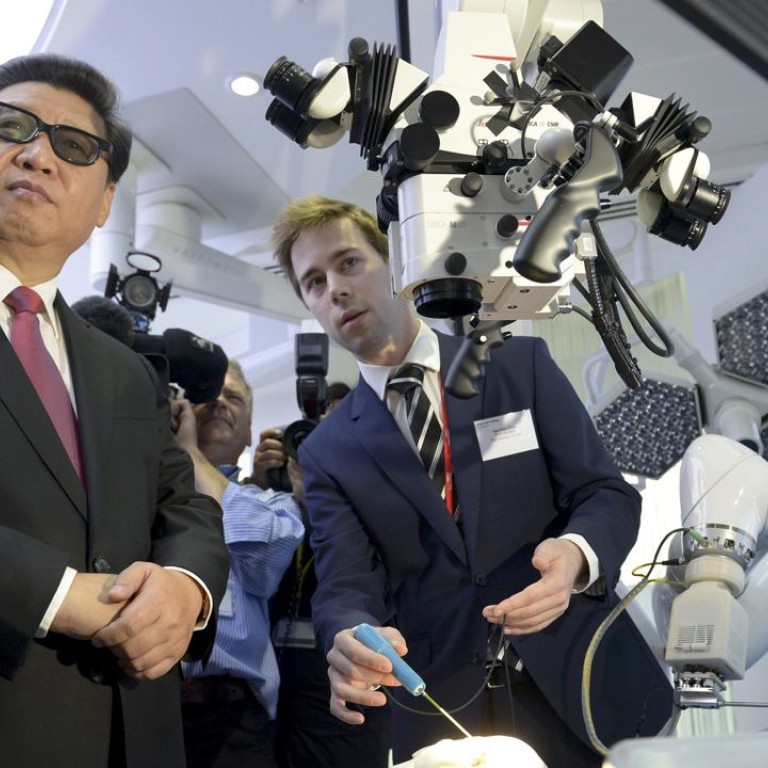
‘Innovation imperative’ the key to China’s economic success over the next decade, analysts say
China already a global leader in patent applications but falls short in engineering-based industries; companies urged to keep adopting faster approaches to innovation to help bolster GDP
Beset by a slowing economy, China now faces the challenge of raising national productivity through greater scientific and engineering innovation.
How well China can address that “innovation imperative” will help determine the course of its economy in the next 10 years, according to a new report from the McKinsey Global Institute (MGI).
MGI, the business and economics research arm of US management consulting firm McKinsey & Company, suggested that the sort of innovation China must go after would, ideally, contribute up to half of gross domestic product growth by 2025, which it estimated to be from US$3 trillion to US$5 trillion in value per year, as labour force expansion and heavy capital investment in the country fades.
It estimated that innovation, broadly defined, can contribute 2 to 3 percentage points of GDP growth in China by 2025.
READ MORE: IMF staff ‘recommend China’s yuan be included in its international basket of currencies’
“The resulting China effect on innovation has the potential to disrupt markets and industries, and could reshape global competition,” Jonathan Woetzel, the MGI director in Shanghai, said on Thursday.
By some common measures of innovation, China has already become a global leader.
With backing from the central government, various Chinese industries spend more than US$200 billion each year on research and development projects. The investment commitment is second only to what the United States spends in research and development.
China leads the world in patent applications, with more than 820,000 filed in 2013, and turns out nearly 30,000 PhDs in science and engineering each year.
The MGI report acknowledged that certain Chinese companies in consumer-focused industries, such as internet services and retail, and efficiency-driven sectors - including production of solar panels, household electrical appliances and construction machinery - have become strong global innovators.
It pointed out that Chinese companies “have learned to read the needs of a rapidly urbanising nation and quickly scale up new products and services to meet those needs”.
READ MORE: China, Hong Kong stocks end slightly higher by midday as players digest Beijing stimulus
Technology start-up Xiaomi was cited as an example of a customer-focused innovator in China. This company is providing “cheaper and better” products, such as smartphones and smart internet-ready television, that are intended to be as good as the models from global brands, but are still priced for the Chinese market.
It said the likes of e-commerce giant Alibaba Group, internet services provider Tencent Holding and domestic online search market leader Baidu “have become global leaders in online services simply by serving the Chinese market”.
Chinese companies are also driving efficiency in a variety of ways, including so-called agile manufacturing, modular design and a flexible approach to automation, according to MGI.
Shenzhen, the city across the Chinese border from Hong Kong, was cited by MGI as a place that has innovated the way goods are manufactured and then delivered to international markets.
The city boasts 2,000 electronic component and product manufacturers, more than 1,000 makers of electrical parts and equipment, 300 apparel makers, and a labour force of nine million.
READ MORE: What does BAT’s hiring freeze really mean to the entire internet industry?
“Design firms in Shenzhen can turn ideas into prototypes in as little as one-fifth the time and at half the cost for doing such work in-house,” the MGI report said.
It stressed, however, that China was still not globally competitive in engineering-based industries, particularly in cars and commercial aviation.
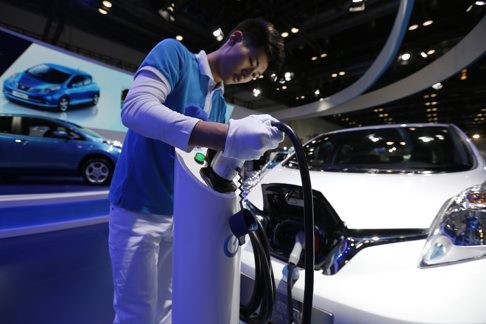
“Engineering-based innovation is part science, part art, and it almost always requires deep experience and learning,” the report said, adding that China has had mixed results so far.
High-speed rail projects, with backing from the central government, have proven successful as Chinese suppliers now have 41 per cent of the global market, according to MGI.
READ MORE: China, Indonesia sign high-speed rail line deal
But in automotive manufacturing, Chinese car makers have relied on platforms contributed by their global joint venture partners or designs that they have commissioned from outside contractors to get products to market more rapidly.
“Even though China has become the world’s largest car market, Chinese companies have only an 8 per cent share of global revenue,” the MGI report said.
China was also behind in fields where more complex science-based innovation are involved, such as pharmaceuticals, biotechnology, semiconductor design and specialty chemicals.
“Among the issues that are seen to inhibit science-based innovation in China are slow regulatory processes, questions about intellectual property protection, inefficient allocation of government research funding and under-investment by private-sector players,” the report said.
It said Chinese policy makers are familiar with the country’s innovation imperative, but the current economic situation the country finds itself in has prompted efforts to fast-track strategic initiatives.
After 30 years of record-setting growth — with its GDP rising by 9.7 per cent on average from 1985 to 2014 — China is in a transitional phase.
READ MORE: Ageing China braces for onslaught of dementia with 30m cases predicted by 2050
“Growth is moderating, and the economy is evolving to a more consumption-driven model, in which more GDP and employment will come from services,” the report said.
The forces that have driven GDP growth in the past — a constant surge of workers into the labour force and massive investments in fixed assets such as infrastructure - are waning.
“Today, the labour force is no longer expanding because China’s population is ageing and returns on fixed-asset investments have declined,” the report said.
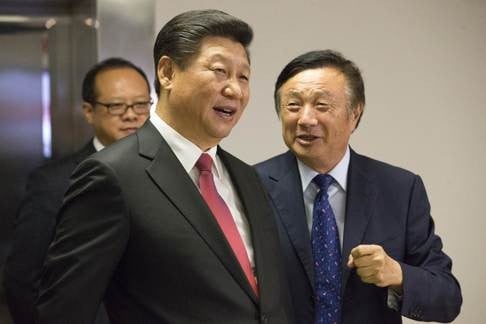
Despite existing challenges in China, MGI analysts said the government is trying to help address the known obstacles.
More importantly, Woetzel said Chinese companies have “created new approaches to innovation that are faster, cheaper and work on a global scale”.
China, for instance, still offers low-cost capacity for research and development, as well as manufacturing.
“Chinese manufacturing labour and researchers cost 10-20 per cent of their developed counterparts today,” the MGI report said.
Government decision makers, meanwhile, are urged to craft coordinated, coherent policies that set the conditions for innovation in the country.
China’s State Council introduced in June last year a new government policy to promote the domestic semiconductor industry through the infusion of vast amounts of capital that will help develop an efficient, advanced local manufacturing supply chain.
The Ministry of Industry and Information Technology said the domestic semiconductor industry was vital to national development and information security. The sector, however, is still too small to meet domestic demand, which is forecast to reach 1.2 trillion yuan (US$188 billion) this year from 916 billion yuan in 2013.
“We expect the government support to accelerate the growth of China’s semiconductor industry,” Bernstein senior analyst Mark Li said.
Li expected Semiconductor Manufacturing International Corp, the country’s largest contract chipmaker, to be the primary beneficiary of that policy.
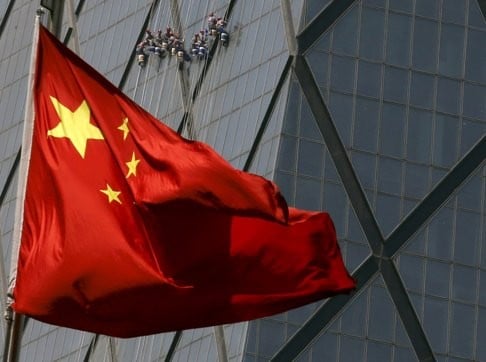
MGI also suggested that broadening access to funding for domestic entrepreneurs and many small and medium-sized enterprises can help cultivate more innovation.
In addition, the government is urged to continuing with market reforms that open up more areas of the economy to competition.
“Reforms to the initial public offering process — with simpler and more predictable listing based on clear rules — and stronger intellectual property enforcement can ensure that innovators enjoy the rewards of their labours,” the MGI report said.
“Our analysis suggests that China could realise about 40 per cent of its innovation imperative through further gains in manufacturing,” it said.
READ MORE: Chinese SOEs will be urged to innovate, chase big projects under next five-year plan
The remainder was expected to come from productivity gains in other industries, as well as major science and engineering-related innovation.
Those were projected to create value of US$1 trillion to US$2.2 trillion per year in 2025, which would help China sustain GDP growth in the next 10 years.
Chen Yougang, a McKinsey partner in Shanghai, said China has the opportunity to become the centre of global innovation a decade from now by “setting a new standard for rapid, inexpensive and nimble innovation that alters competition across industries”.
Critics, however, see another side of China’s impact on innovation.
US think tank the Information Technology and Innovation Foundation last month said in a report that “China remains wedded to an aggressive innovation mercantilism that seeks advantage for its domestic technology companies at the expense of foreign competitors”, ignoring the commitments it agreed after joining the World Trade Organisation (WTO) in 2001.
The foundation alleged that China has embarked on “a systematic plan to replace American companies with their Chinese equivalent” across a wide range of advanced industries, from information technology to biotechnology.
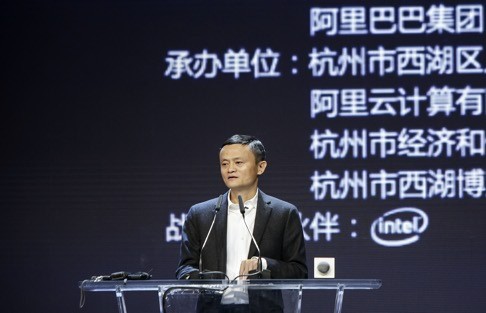
It said the central government uses a range of techniques, including forced technology transfers or joint ventures as a condition of market access, cybertheft of foreign intellectual property, abuse of anti-monopoly and competition laws, and outright subsidies to state-owned or directed enterprises.
As an example, the foundation said China’s National Guidelines for Development and Promotion of the Integrated Circuit Industry called for what it described as a “closed-loop semiconductor ecosystem that would reduce Chinese imports of US semiconductors by half in 10 years and eliminate them entirely within 20 [years]”.
It added that China’s economic policy increasingly “rejects the WTO principle of comparative advantage, instead seeking absolute advantage and, ultimately, dominance across a range of advanced technology industries”.
China is poised to record the second-fastest rate of growth, behind India, in the US$2.3 trillion global information technology market this year, despite concerns about the country’s economy and speculation that the central government wants less foreign technology.
Total government and enterprise spending on information technology goods and services on the mainland is estimated to reach 807 billion yuan, up 8 per cent from last year, according to the latest industry forecast published yesterday by Forrester Research.
That prediction makes China the world’s third-largest information technology market behind the United States and Japan.
The report, which excluded consumer and corporate telecommunications services spending, forecast that the US market would reach US$862.8 billion this year, followed by Japan at 19.9 trillion yen.

